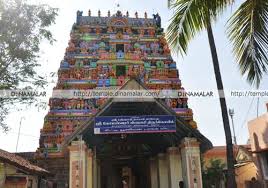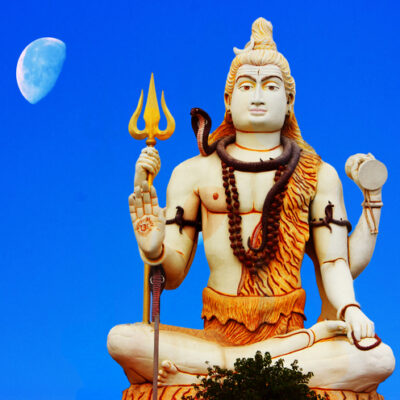Kottaiyur Sri Koteeswarar Temple, Thanjavur

Address
Kottaiyur Sri Koteeswarar Temple, Kottaiyur, Melakkaveri Post, Kumbakonam Taluk, Tanjure District, Tamil Nadu-612 002. Tele: +91 0435 2450595, 94866 70043.
Deity
Kodeeswarar Amman: Kandhu kreedambal
Introduction
Kottaiyur Kodeeswarar Temple dedicated to Shiva, located in Kottaiyur, a village in the outskirts of Kumbakonam, in Thanjavur district in Tamil Nadu, India. Shiva is worshipped as Koteeswarar and his consort Parvathi as Pandhadu Nayaki. Koteeswarar is revered in the 7th century Tamil Saiva canonical work, the Tevaram, written by Tamil saint poets known as the Nayanmars and classified as Paadal Petra Sthalam, the 276 temples revered in the canon. Theertham (Holy water): River Cauveri, Kodi Theertham (Amutha well) Sthala Vriksham (Sacred Tree): Castor oil plant
Puranic Significance
- Pralayam & Amutha Kalas:
- At the end of every yuga, a great flood (Pralayam) destroys all life.
- Lord Shiva, through Brahma, preserved the seeds of life, Vedas, and Puranas in a pot (Amutha Kalas) filled with nectar, kept on Mount Kailash.
- During Pralayam, the pot drifted and eventually settled in Kumbakonam.
- Lord Shiva, as Kiratha Murthy, broke the pot, and its fragments fell in various places, forming sacred Shivalingams.
- In Kottaiyur, drops of nectar are believed to have fallen into a well, known as the Amutha Well.
- Formation of the Shivalingam:
- Lord Shiva appeared in a Shivalingam amidst castor plants (Kottai in Tamil), giving the place the name Kottaiyur.
- The Shivalingam resembles a jackfruit texture, symbolizing its divine formation.
- Water droplets continuously emerge from the lingam’s top, representing the presence of the Ganges in Shiva’s matted hair.
- Heranda Maharishi’s Sacrifice for River Cauvery:
- Sage Heranda Maharishi performed penance under castor plants at this site.
- When Aadhiseshan (serpent deity) emerged from the underworld in Thiruvalanchuzhi, River Cauvery was pulled underground.
- Lord Shiva’s divine voice stated that a king or sage must sacrifice himself to restore the river.
- The sage entered the underworld and brought River Cauvery back to earth at Mela Cauvery near Kumbakonam.
- He later attained salvation at Thiruvalampuram.
- Blessing of Sage Pathrayogi & Lord Koteeswarar:
- Sage Pathrayogi, in search of spiritual power, visited many Shiva temples.
- At Kottaiyur, Lord Shiva appeared as one crore (kodi) images of himself, along with one crore forms of Vinayakar, Parvathy, Murugan, and Chandikeswarar.
- Hence, the deity is called Sri Koteeswarar, and the place is named Koteecharam.
- Any good or bad deed done here is believed to be multiplied one crore times.
- Prince Surusi’s Redemption:
- Surusi, a prince from the Thirihartha kingdom, was cursed by Sage Pathrayogi to become a devil for disturbing his penance.
- As per Sage Vyasa’s advice, his father brought him to Kottaiyur, where he bathed in the temple’s theerthams and worshiped Shiva.
- The prince was freed from his curse, and his father renovated the temple and made endowments.
- Worship by Divine Beings:
- Lord Rama, Brahma, Indra, Sage Narada, and Sage Markandeya are believed to have worshiped Lord Koteeswarar here.
Beliefs
It is believed that those who worship the lord here will get the benefit of worshiping the lord in one crore Shiva temples. It is believed that any good deed (“Punniyam”) or bad deed (“Pavam”) done here will be multiplied one crore times. Devotees sprinkle water from this temple’s Theertham on their head and worship the lord here to stay healthy and young. They believe that doing so will also keep away the evil spirits.
Special Features
This is one of the 276 Devara Paadal Petra Shiva Sthalams and 44th Shiva Sthalam on the northern bank of the river Cauvery in Chozha Nadu (Vadakarai). Lord Shiva in this temple is a Swayambumurthi (self-manifested). This east facing temple has two corridors and its main tower (Rajagopuram) has 5-tiers. The last consecration ceremony (Maha Kumbabishekam) took place on 26.10.2015 and prior to that on 09.02.1992. Other than the shrines of Lord Shiva and Goddess Parvathy, shrines and idols of Kodi Vinayakar, Kodi Murugan, Gajalakshmi, Natarajar, Somaskandar, Mahalakshmi, Navagraham, Bairavar, Jurakeswarar, Saneeswarar, Suryan Chandran, lingam, Maha Sastha, Nalvar, Pancha lingam and Athreya Maharishi (Herandar) can be seen in the main hall and corridors. In the “koshtam” (place surrounding the sanctum sanctorum), idols of Narthana Vinayakar, Dakshinamurthy, lingothbavar, Brahma, Durgai and Chandikeswarar can be seen.
Festivals
Three yearly festivals on its calendar, namely Margazhi Tiruvathirai during the Tamil month of Margazhi (December–January), Shivaratri in February–March, Panguni Uthiram during Panguni (March–April)
Century/Period/Age
1000 to 2000 years old
Managed By
Hindu Religious and Charitable Endowments (HRCE)
Nearest Bus Station
Kottaiyur
Nearest Railway Station
Kumbakonam
Nearest Airport
Trichy







